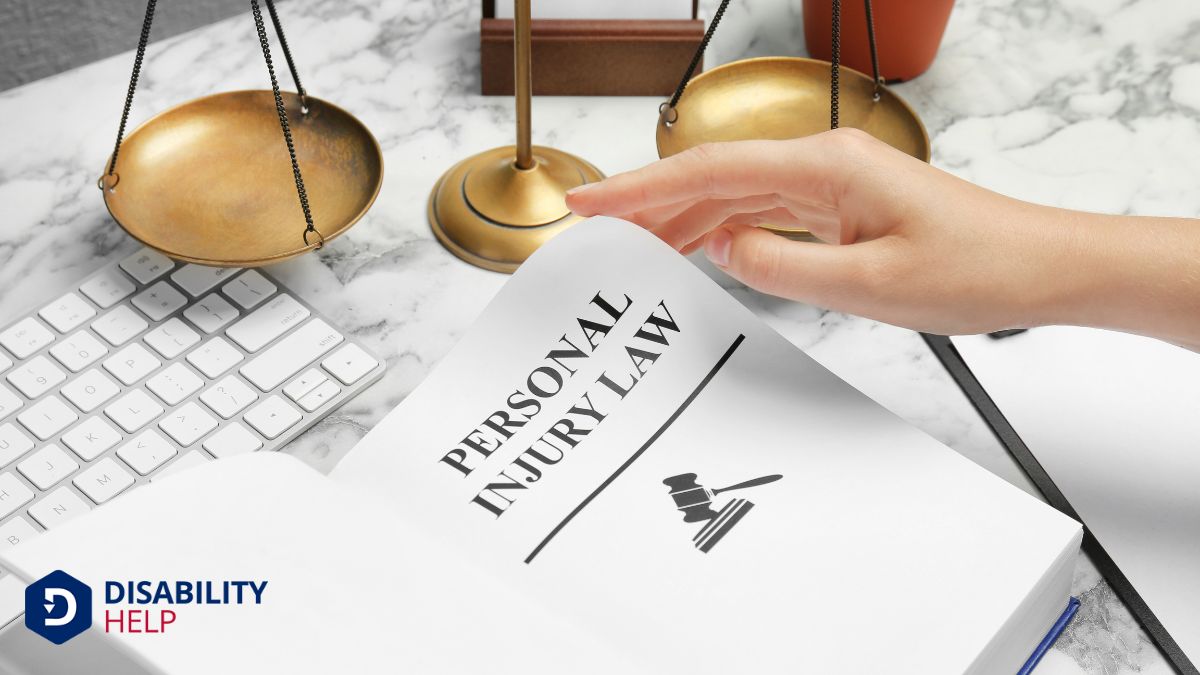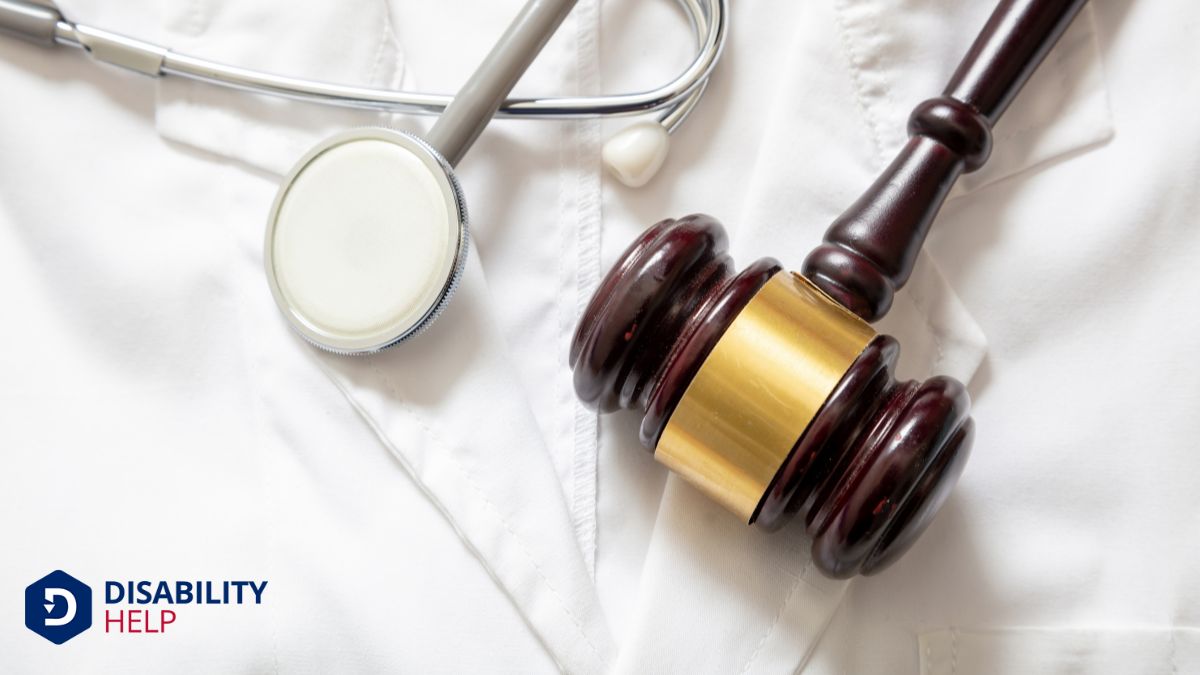Let's explore what qualifies as a personal injury case. It's not just about accidents; it involves a party's negligenceA legal concept where a party fails to exercise reasonable care, resulting in harm to another person... or wrongful act causing harm, like a car crash or medical malpractice. The key is proving that the duty of care was breached, leading to injury and damages. But how do we determine liability, and what steps should we take if it happens to us? Let's unpack these questions together.
Key Takeaways
- Personal injury cases involve harm caused by another's negligence or misconduct.
- Types include car accidents, slips and falls, and medical malpractice.
- Liability is determined by proving negligence and breach of duty.
- Evidence like medical records, witness statements, and police reports is essential.
- Successful claims require proving duty of care, breach, causation, and damages.
Understanding Personal Injury Law

When we talk about personal injury lawThe area of law that deals with compensating individuals who have been injured, including those with..., we're diving into a field that addresses injuries caused by someone else's negligence or misconduct. We aim to guarantee victims receive fair compensation for their suffering.
Together, let's explore the essentials of this legal area.
Understanding personal injury law begins with recognizing its core principles. It empowers us to seek justice when harmed due to another's actions.
The law covers various scenarios where someone's carelessness leads to physical or emotional harm. It's vital that we grasp who might be liable and how these cases unfold.
Common Types of Personal Injury Cases
Let's explore some common types of personal injury cases we might encounter.
Car accident claims often top the list, but slip-and-fall incidents and medical malpractice cases also frequently require our attention.
Understanding the nuances of these cases helps us better navigate the legal landscape and determine qualifications for claims.
Car Accident Claims
Car accident claims are among the most prevalent types of personal injury cases, often arising from the negligence of one or more drivers.
We encounter these situations regularly, whether it's due to distracted driving, speeding, or failing to follow traffic signals.
When pursuing a car accident claim, it’s vital to understand several key elements that strengthen our case:
- Proof of Negligence: We must show the other driver breached their duty of care.
- Causation: Evidence should connect the accident directly to our injuries.
- Damages: Documented costs such as medical bills and lost wages are essential.
- Insurance Policy Limits: Knowing the coverage available impacts potential recovery.
Understanding these elements helps us navigate the often complex process of car accident claims, ensuring we’re prepared to seek rightful compensation.
Slip and Fall
Although slip and fall incidents might seem straightforward, they're a significant type of personal injury case that many people underestimate. In our daily lives, we often encounter slippery floors, uneven surfaces, or poorly lit areas.
When we think about a slip and fall case, it's essential to understand that property owners have a responsibility to maintain safe environments. If they neglect this duty, accidents can happen, leading to injuries like broken bones or concussions.
We must determine if the property owner was aware of the hazard and failed to address it. In such cases, victims might be entitled to compensation.
These incidents remind us of the importance of safety and awareness in everyday environments. Understanding our rights can help us navigate these situations more effectively.
Medical Malpractice Cases
Slip and fall incidents highlight our need to be aware of safety in everyday settings, which leads us to another significant area of personal injury law: medical malpractice cases.
When we trust healthcare professionals with our well-being, we expect a certain standard of care. Unfortunately, mistakes can happen, resulting in harm. Medical malpractice occurs when a healthcare provider deviates from these standards, causing injury.
Key aspects include:
- Misdiagnosis: Incorrectly diagnosing a condition leading to improper treatment.
- Surgical errors: Mistakes during surgery, such as operating on the wrong site.
- Medication errors: Prescribing incorrect medication or dosage.
- Failure to treat: Not providing appropriate treatment for a diagnosed condition.
Understanding these elements helps us identify when a situation might qualify as medical malpractice, ensuring we seek justice where it’s due.
Determining Liability in Personal Injury Claims
When evaluating liability in personal injury claims, we must first identify who acted negligently. This means pinpointing the party responsible for causing harm through their actions or omissions.
We need to take into account the relationship between the involved parties and whether one had a duty to guarantee the other's safety. For example, a driver has a duty to follow traffic laws to avoid harming pedestrians or other drivers.
Next, we examine the circumstances surrounding the incident. Did someone breach their duty by acting carelessly or recklessly? If so, they may be liable for any resulting injuries.
We also need to gather evidence, such as witness statements or video footage, to support our claim. This helps us build a strong case and seek appropriate compensation for the injured party.
The Role of Negligence in Personal Injury
Negligence plays an essential role in personal injury cases as it forms the foundation for establishing fault.
When we’re dealing with personal injury, understanding negligence helps us determine who’s responsible. In simple terms, negligence occurs when someone fails to exercise reasonable care, leading to harm.
For a successful claim, we need to prove a few elements:
- Duty of Care: The defendant had a legal obligation to protect the plaintiff from harm.
- Breach of Duty: The defendant didn’t meet the expected standard of care.
- Causation: The defendant’s actions directly caused the injury.
- Damages: The plaintiff suffered actual harm or loss.
Intentional Acts Leading to Personal Injury
While negligence is a common basis for personal injury claims, intentional acts can also lead to significant harm and legal consequences. These acts occur when someone deliberately causes injury to another person. Common examples include assault, battery, and false imprisonment.
In these situations, the perpetrator's actions are purposeful, unlike negligence, which arises from carelessness.
We must understand that intentional acts are taken seriously in the legal system because they demonstrate a clear disregard for the victim’s safety and well-being.
When pursuing a personal injury case based on intentional acts, we can seek compensation for medical expenses, pain and suffering, and even punitive damages.
It’s essential to document the incident thoroughly and consult with a legal professional to explore our options for justice and recovery.
Evidence Required in a Personal Injury Case
To effectively pursue a personal injury case, particularly those involving intentional acts, we must gather solid evidence to support our claims. This evidence demonstrates the nature of the injury and the responsible party's role.
By focusing on vital elements, we guarantee our case is robust and compelling. Key pieces of evidence include:
- Medical Records: Document injuries and treatments, establishing the link between the incident and harm.
- Photographs and Videos: Capture the scene, injuries, and conditions, providing visual proof.
- Witness Statements: Corroborate events and offer personal accounts of the incident's circumstances.
- Police Reports: Offer official documentation regarding the incident, aiding in establishing fault.
Let’s guarantee we have these elements to strengthen our case and seek the justice we deserve.
Steps to Take if You Have a Personal Injury Claim

When we find ourselves with a personal injury claim, the first step is to gather essential evidence like photos and medical records to support our case.
Next, let's consult a legal expert who can guide us through the complexities of our claim.
Finally, understanding the claim process will help us navigate each stage with confidence and guarantee we're prepared for what's ahead.
Gather Essential Evidence
Before diving into the complexities of a personal injury claim, it’s crucial we gather essential evidence that will support your case.
Evidence serves as the backbone of our claim, ensuring we have a strong foundation.
Let’s focus on four key areas:
- Photographs: Capture images of injuries, accident scenes, and any property damage. They provide a visual context that's irrefutable.
- Witness Statements: Secure contact information and statements from anyone who saw the incident. Their accounts can corroborate your story.
- Medical Records: Obtain detailed records of your injuries and treatments. These documents validate the extent of harm suffered.
- Official Reports: Acquire police or incident reports to add an objective perspective to your case.
Consult Legal Expert
How do we navigate the next steps in a personal injury claim? First, consulting a legal expert is imperative. Personal injury lawyers possess the expertise to evaluate our case's merits and potential compensation. They help us understand the legal intricacies, guaranteeing we don't overlook any essential details.
When we consult a legal expert, we're gaining an ally who can guide us through complex legal processes. This support is fundamental, especially when dealing with insurance companies or opposing parties.
Lawyers can negotiate on our behalf, aiming for a fair settlement or preparing for court if necessary.
Let’s make sure we choose a lawyer experienced in personal injury claims. Their insights and experience can make a significant difference in the outcome of our case.
Understand Claim Process
To effectively navigate a personal injury claim, it's essential we comprehend the steps involved in the process.
First, documenting every detail matters. We should gather evidence such as photos, witness statements, and medical records that support our case.
Next, notifying the responsible party or their insurance company promptly is vital. This guarantees our intention to file a claim is clear.
We must also track all expenses related to the injury, including medical bills and lost wages, to demand fair compensation.
Here are key steps to follow:
- Gather Evidence: Collect photos, records, and statements.
- Notify Parties: Inform the responsible party or insurer.
- Document Expenses: Record all injury-related costs.
- Consult an Attorney: Seek legal advice for guidance.
Conclusion
In exploring personal injury cases, we've learned that they hinge on proving negligence or wrongful actions caused harm. Whether it's a car accident or medical malpractice, understanding the process and knowing what evidence to gather is essential. If you believe you've suffered due to someone else's actions, it's important to act quickly and seek legal advice. Together, we can navigate the complexities of personal injury law and pursue the compensation you deserve.






